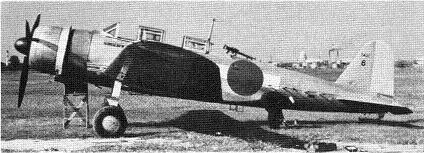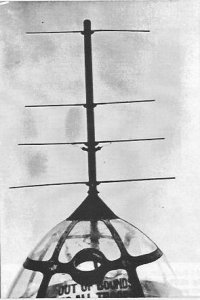![]() The Pacific War Online Encyclopedia
The Pacific War Online Encyclopedia
|
| Previous: Type 3 Model 1 Sonar | Table of Contents | Next: Type 11 Early Warning Radar |
 U.S. Navy. Via Francillon (1979) |
 National Archives. Via Nakagawa (1997) |
| Wavelength |
200 cm |
| Pulse length |
10 microseconds |
| Peak powe |
3 kW |
| Range | 75 nautical miles (130 km) |
| Antenna |
Various; see description below |
| Display |
A scope |
| Weight |
240 lb 110 kg |
| Production: | About 2000. Available from 1942-8 and Installed on a number of G4M
"Betty", H8K "Emily", and B5N "Kate" aircraft,
particularly after 1944. |
The Type 6 Mark 4 Mod 3 radar was used with various antenna
configurations on a number of Japanese aircraft. Few units
were so
equipped before 1944 and the first example was captured by the Allies in May 1944 at Hollandia. The set was heavy enough
that torpedo bombers
equipped with it were unable to carry a torpedo as well, making them
dedicated search
aircraft.
The antenna configurations seems to have varied with platform. The
installations on multi-engine aircraft used a four-element Yagi antenna
in the nose for the transmitter and two reflected dipoles on the wings
for the receiver. On torpedo bombers, where a nose antenna was
impractical, a fuselage dipole array was apparently used instead. The
fuselage dipole array had the significant weakness that it could not
search the area head ahead of the aircraft, so that aircraft equipped
with the radar had to approach a target obliquely to maintain radar
contact.
The radar was plagued by corona discharge at high altitude and by
sea return. The Yagi antenna was less susceptible to this effect.
References
The Pacific War Online Encyclopedia © 2009-2010, 2013-2014 by Kent G. Budge. Index